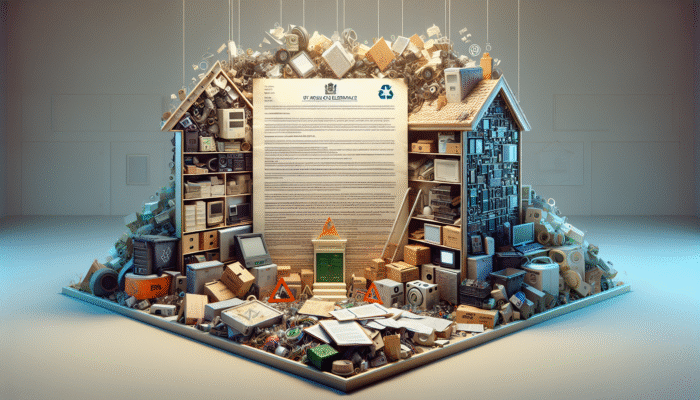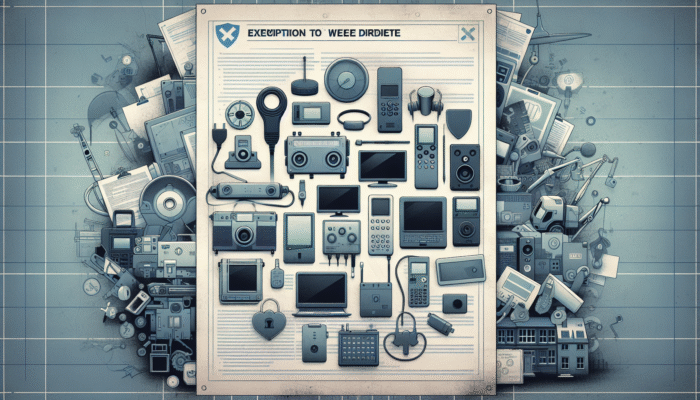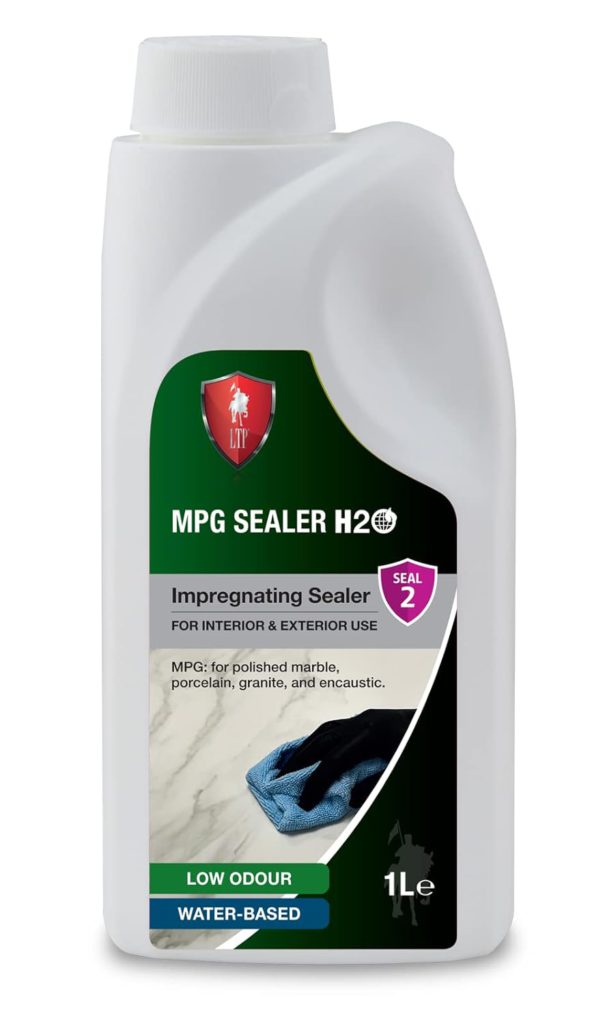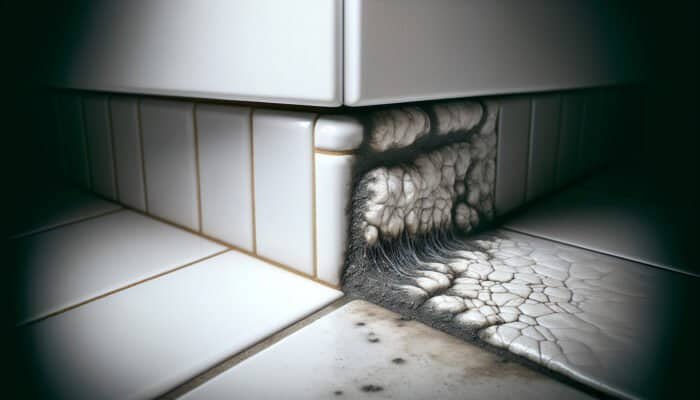Master the UK Electronics Regulations for Safe and Sustainable House Clearance
Thorough Analysis of Essential Legislation Impacting Electronics Disposal in the UK

The framework of regulations governing the disposal of electronics in house clearance across the UK is shaped by several significant legislative acts, notably the Waste Electrical and Electronic Equipment (WEEE) Directive and the Environmental Protection Act (EPA). This WEEE Directive holds manufacturers and retailers accountable for the responsible management of their products at the end of their life cycle. This initiative is crucial for tackling the increasing challenge of electronic waste, ensuring that these materials are discarded safely and in an environmentally sound manner. For individuals involved in electronics clearance, understanding these regulations is not just beneficial but essential, as compliance reflects a commitment to sustainable practices while also fulfilling legal obligations.
In conjunction with the WEEE Directive, the Environmental Protection Act mandates rigorous waste management protocols, particularly concerning hazardous materials. This extensive legal framework requires all stakeholders in electronics clearance—from manufacturers to consumers—to follow defined guidelines aimed at reducing environmental risks. Furthermore, local councils throughout the UK have instituted specific regulations that complement national laws while addressing local circumstances. Therefore, it is imperative for homeowners to familiarize themselves with both national and local regulations to guarantee compliance and avoid potential penalties.
The Importance of Adhering to Regulations for Safe Electronics Disposal
Adhering to regulations regarding electronics for house clearance goes beyond mere compliance; it represents a vital commitment to environmental stewardship and public health. When individuals or businesses disregard these regulations, they inadvertently exacerbate the already critical issue of electronic waste, which poses significant threats to ecological systems and human health. Harmful substances, such as lead, mercury, and cadmium, can leach into soil and waterways if disposed of improperly, resulting in long-term environmental damage and health risks. It is essential to recognize that these hazardous materials can adversely affect not only local wildlife but also human populations, particularly those residing near landfills.
Moreover, stringent adherence to these regulations can significantly enhance the reputation of businesses and individuals involved in house clearances. Demonstrating a commitment to environmentally responsible practices not only attracts consumers who value sustainability but also improves public perception. Consequently, possessing a thorough understanding of local and national regulations is crucial for securing legal protection while fostering a community that prioritizes environmental integrity. This dedication to responsible practices often leads to increased customer loyalty and trust, which is invaluable in the modern eco-conscious marketplace.
Pivotal Consequences of Non-Compliance with Electronics Regulations
Failing to comply with regulations concerning electronics during house clearance can result in severe consequences, including substantial fines and potential imprisonment. The Environment Agency possesses the authority to impose penalties for non-compliance, which can vary significantly depending on the violation’s seriousness. For example, improper disposal of electronic items can lead to fines reaching thousands of pounds, contingent upon the scale and nature of the infraction. This not only creates a financial burden but can also result in protracted legal disputes that detract from core business operations.
The ramifications of non-compliance extend beyond financial penalties; they can also irreparably tarnish reputations, particularly for businesses. Companies found to be in violation of regulations may face public backlash, leading to diminished customer trust and lost business opportunities. It is vital for individuals and organizations to recognize these risks and remain informed about the regulations governing electronic waste disposal. Regular training sessions and updates on compliance can be instrumental in preventing such oversights.
Identifying Exceptions and Unique Cases in Electronics Regulations

While the majority of electronic items are subject to the rigorous standards set forth by the WEEE Directive and the Environmental Protection Act, certain exceptions may apply. Specific products, such as certain medical devices or military equipment, might not be governed by standard regulatory frameworks due to their unique characteristics and handling requirements. For those involved in house clearances, understanding these exceptions is crucial to avoid unnecessary legal complications while ensuring adherence to applicable laws. These exemptions are typically determined by the specific use and associated risks of the items.
Generally, the process of applying for these exemptions necessitates formal documentation along with a valid justification for the request. Local authorities can provide assistance in navigating this process, ensuring that homeowners comply with regulations while effectively managing their electronic waste. Proactively understanding these nuances can save time and resources, streamlining the clearance process to ensure it aligns with legal standards. This proactive approach helps to prevent potential misunderstandings or misinterpretations of the law.
Implementing Best Practices for Responsible Electronics Disposal
When clearing electronics, adhering to best practices is critical to ensure compliance with regulations governing electronics for house clearance. The initial step involves assessing whether the items in question can be recycled. A significant portion of electronic components can be reused or recycled, thereby minimizing waste and reducing the overall environmental impact. Numerous local charities and organizations are ready to accept functional electronics, allowing them to serve a second purpose rather than contributing to landfill overflow. This approach not only benefits the environment but also supports community initiatives that advocate for sustainability.
Engaging certified waste disposal services is another vital practice. These specialized firms focus on managing electronic waste and ensure compliance with all relevant regulations. Homeowners should verify that the service provider is accredited and possesses the necessary certifications to legally recycle or dispose of electronics. Furthermore, maintaining detailed records of disposal or recycling activities can be beneficial for future reference, especially if inquiries arise from regulatory authorities. This documentation acts as proof of compliance and can be invaluable in case of any disputes.
Recognizing Regulated Electronics for House Clearance
Identifying Common Household Electronics Subject to Regulatory Standards

In the UK, a wide range of household electronics falls under the scope of regulations governing electronics for house clearance. This includes devices such as televisions, computers, printers, and smartphones. Understanding which items are regulated is essential for homeowners looking to dispose of outdated technology responsibly. The WEEE Directive categorizes these products into various groups based on their characteristics and potential environmental impacts, ensuring that hazardous components are handled correctly.
For instance, televisions often contain hazardous materials that can pose serious risks if disposed of incorrectly. Current legislation requires that these items be processed through authorized channels to guarantee safe recycling. Similarly, computers are regulated due to their complex components, which necessitate specialized handling during disposal. Homeowners must diligently identify these regulated items and manage their disposal appropriately, as failure to do so can result in significant legal consequences. Staying informed about these regulations not only aids compliance but also promotes responsible consumer behavior.
Examining Regulatory Exemptions and Unique Cases for Electronics
While the majority of household electronics are subject to regulation, certain items may not be bound by the same stringent requirements. For example, smaller household appliances like toasters or kettles might not always be governed by the same regulatory framework as larger electronic devices. Understanding these distinctions is essential for effective house clearance. It is crucial to consult local regulations, as exemptions can vary based on the type of electronic equipment and its intended use. This awareness empowers homeowners to make informed decisions regarding disposal practices.
In special cases, such as electronics used by vulnerable groups (e.g., medical devices for home healthcare), different regulations may apply. These items often require careful handling and may not be processed through standard recycling channels. Homeowners must educate themselves about these exceptions to ensure compliance and safeguard their communities’ well-being. Understanding these nuances not only simplifies the clearance process but also fosters responsible practices among the public.
The Significance of Labelling and Documentation in Electronics Disposal
Scrutinizing labels and documentation on electronic products is a crucial step in determining their regulatory status. Many electronics display labels indicating compliance with the WEEE Directive and other relevant laws. Homeowners should regularly examine these labels to ascertain the appropriate disposal methods for each item. This diligence ensures that items are discarded in alignment with legal requirements and environmental standards, thereby promoting responsible waste management.
Documentation also plays a vital role in the clearance process. Keeping comprehensive records of how and where electronics were disposed of can provide reassurance and protection against potential legal challenges. Many disposal services offer certificates of recycling, which serve as proof of compliance with regulations governing electronics for house clearance. This documentation can be invaluable if inquiries arise regarding the disposal process in the future, offering a safeguard against potential disputes.
Ensuring Safe Handling and Storage Practices for Electronics
Essential Steps for Preparation Prior to Conducting Electronics Clearance
Before initiating a house clearance involving electronics, comprehensive preparation is vital to guarantee safety and compliance with regulations. One of the initial steps is to gather essential safety equipment, such as gloves and eye protection, to mitigate the risk of accidents during handling. Establishing a clear workspace is equally important; a flat, dry area free of clutter facilitates efficient sorting and packing of items designated for disposal. This thoughtful preparation streamlines the process, ensuring that all items are handled safely and effectively.
Additionally, understanding the specific regulations that pertain to the electronics being cleared is critical. This includes familiarizing oneself with local council guidelines and any particular requirements for hazardous material handling. Homeowners should also consider creating a thorough inventory of the electronics being cleared, as this will help ensure proper documentation and regulatory compliance throughout the process. This inventory can serve as a useful tracking tool, ensuring that all necessary precautions are taken.
Adopting Effective Storage Techniques During Electronics Clearance
Employing appropriate storage techniques during the clearance process is essential to prevent damage to electronics and ensure safe handling. If feasible, storing items in their original packaging provides additional protection. For items lacking packaging, it is important to place them on stable surfaces away from moisture and extreme temperatures. This approach not only preserves the electronics but also mitigates any potential environmental hazards associated with damaged items. Taking the time to organize storage effectively contributes to a smoother clearance experience.
Furthermore, clearly labeling storage boxes can simplify the sorting process and help differentiate between regulated and non-regulated items. This organization is vital for maintaining compliance with regulations governing electronics for house clearance and ensuring that all items are handled correctly throughout the clearance. Proper labeling not only aids in compliance but also enhances efficiency during the clearance process.
Minimizing Damage and Hazards During Electronics House Clearances
To prevent damage to electronics during house clearances, homeowners must handle items with care. It is critical to avoid stacking heavy items on delicate electronics, as this can lead to physical damage. Additionally, ensuring that cables are not bent or frayed is vital to avert electrical hazards, especially with older devices that may have worn insulation. These precautions are essential to maintain the integrity of the electronics while preventing potential safety risks.
Creating a checklist of dos and don’ts for handling electronics can be immensely beneficial. This checklist can outline critical measures, such as avoiding moisture exposure and ensuring devices are unplugged before handling. By adhering to these guidelines, homeowners can significantly reduce the risk of accidents and ensure that the clearance process is conducted as safely as possible. This proactive approach not only safeguards the electronics but also protects those involved in the clearance process.
Safe Transportation Practices for Electronics During Clearance
Transporting electronics during a house clearance requires meticulous attention to detail to prevent damage or breaches of compliance. Utilizing padded transport boxes or bubble wrap can help cushion fragile items, particularly those with screens or intricate components. It is also advisable to secure loose items to prevent them from shifting during transit, which can cause damage. Ensuring careful transportation is essential to maintain compliance with regulations while safeguarding valuable electronics.
When moving electronics to disposal facilities, homeowners should ensure they are thoroughly informed about the regulations concerning the transportation of hazardous materials. Certain electronics may necessitate special handling during transport, and adherence to appropriate guidelines is critical for compliance with regulations governing electronics for house clearance. Always consult local authorities for specific requirements regarding the transportation of electronics within your jurisdiction, as this can vary based on location and type of electronic waste.
Exploring Diverse Options for Electronics Disposal and Recycling
Finding Authorized Recycling Facilities for Electronics Disposal
Identifying authorized recycling facilities is pivotal for ensuring the compliant disposal of electronics. The UK has established numerous centers where household electronics can be taken for responsible recycling. These facilities are equipped to manage electronic waste safely, ensuring that hazards are addressed appropriately and valuable components are extracted for reuse. This not only protects the environment but also contributes to the circular economy.
Homeowners can locate these facilities through local council websites or the Recycle Now initiative, which provides a comprehensive guide to recycling options available in various regions. By utilizing these authorized centers, individuals can contribute to a circular economy and alleviate the pressure on landfills while ensuring adherence to regulations governing electronics for house clearance. This proactive approach also supports community efforts toward sustainable waste management.
Leveraging Local Council Services for Efficient Electronics Disposal
Local councils in the UK often provide tailored services to aid residents in disposing of electronics during house clearances. Many councils designate specific collection days or drop-off points for electronic waste. This service is especially advantageous for homeowners looking to dispose of larger items like televisions or washing machines, which may not fit into standard household waste bins. These services play a crucial role in promoting responsible disposal practices within the community.
By taking advantage of these local services, homeowners can ensure compliance with regulations while supporting community initiatives that advocate for sustainable waste management practices. It is advisable to consult the local council’s website or contact their office to learn about available services, including any potential costs or restrictions associated with disposal. This ensures that homeowners are well-informed and can plan their disposal efforts effectively.
Manufacturer Take-Back Schemes as a Responsible Disposal Option
Numerous electronics manufacturers in the UK offer take-back schemes that allow consumers to return old products for responsible disposal. These programs not only facilitate adherence to regulations governing electronics for house clearance but also promote responsible consumer behavior by encouraging recycling. Many companies provide incentives, such as discounts on future purchases, to motivate customers to recycle their outdated electronics. This creates a mutually beneficial scenario, aiding both the environment and consumers.
Participating in these take-back schemes can significantly reduce the burden on local disposal facilities while ensuring that electronics are processed in accordance with environmental regulations. Homeowners should consult with the manufacturers of their electronics for specific details regarding available take-back options and any requirements that must be fulfilled for participation. This engagement with manufacturers fosters a culture of responsibility and sustainability in electronics disposal practices.
Prioritizing Data Security and Privacy During Electronics Clearance
Understanding the Critical Need for Secure Data Wiping Prior to Disposal
Before disposing of any electronics—particularly devices like computers and smartphones—safeguarding personal data through secure erasure is of utmost importance. Many individuals underestimate the potential risks associated with leaving data intact, which can lead to data breaches and identity theft. Thus, acknowledging the significance of effective data wiping is crucial for anyone engaged in house clearances. This step not only protects personal information but also ensures compliance with relevant data protection laws.
Data stored on devices can be easily retrieved by malicious individuals, posing a substantial threat to personal privacy. Therefore, utilizing robust data wiping software that complies with best practices and standards is essential, as it guarantees that all personal information is irretrievably destroyed. This aspect of house clearance is not solely about adhering to electronic waste regulations but also plays an integral role in protecting personal information and maintaining privacy. Homeowners must prioritize this step to mitigate risks associated with data exposure.
Effective Techniques for Secure Data Destruction
Several effective methods are available for securely destroying data on electronic devices, each offering varying levels of security. One common approach is to utilize certified data wiping software, which removes all traces of personal information while ensuring compliance with UK privacy laws. These tools often generate reports confirming that data has been securely erased, providing additional reassurance for users. This transparency fosters trust and confidence in the data destruction process.
For those who prefer a more hands-on approach, physically destroying the device, such as shredding hard drives or dismantling it, serves as another option. This method guarantees that data cannot be recovered, though it may not be practical for all devices. Understanding the appropriate method for data destruction based on the type of electronic equipment is crucial for maintaining compliance and effectively protecting personal privacy. This knowledge empowers homeowners to make informed decisions about data security.
Legal Repercussions Arising from Data Breaches
Neglecting to secure personal data during the disposal of electronics can lead to severe legal consequences. Under the Data Protection Act and the General Data Protection Regulation (GDPR), individuals and businesses are required to safeguard personal data. A breach resulting from improper data disposal can trigger investigations, substantial fines, and reputational harm. This can be particularly damaging for businesses, leading to loss of customer trust and potential lawsuits.
The severity of penalties can vary based on the nature of the breach and whether negligence is established. Homeowners must understand that even personal devices used for private purposes are subject to these regulations. Therefore, ensuring that appropriate data destruction methods are employed is not merely a matter of individual security but also a legal obligation within the UK. This awareness is crucial for all individuals involved in electronics disposal.
Comprehending UK Data Protection Regulations Related to Electronics
The UK has implemented stringent data protection regulations that pertain to all forms of personal data, including that stored on electronic devices. The GDPR outlines comprehensive guidelines regarding the collection, processing, and disposal of personal data. Familiarity with these regulations is vital for homeowners involved in house clearances, as non-compliance can lead to significant legal repercussions. This knowledge is essential for ensuring that personal data is handled responsibly throughout the disposal process.
Emphasis is placed on data minimization, ensuring that only necessary data is retained. When clearing electronics, individuals must ensure that any personal data is either securely wiped or irretrievably destroyed, as mandated by these regulatory requirements. Being well-versed in these laws empowers homeowners to conduct clearances responsibly and in alignment with UK standards. This proactive approach fosters a culture of compliance and responsibility concerning data protection.
Best Practices for Ensuring Data Security During Electronics Clearance
To enhance data security and privacy during the handling of electronics, several best practices should be implemented. Firstly, creating a comprehensive inventory of all electronic devices is crucial for tracking those that require data wiping or destruction. This approach fosters accountability and ensures that no items are overlooked in the process. This inventory can serve as a valuable resource during the clearance and disposal stages.
Moreover, engaging professional services that specialize in data destruction can offer peace of mind. These companies utilize the latest technology and adhere to all relevant regulations, guaranteeing that data is securely and effectively destroyed. Homeowners should also prioritize educating themselves and their families about the importance of data security, cultivating a culture of awareness surrounding data privacy. This collective responsibility can significantly reduce the risks associated with data exposure during electronics clearance.
Partnering with Professional Clearance Services for Electronics
Selecting a Trustworthy and Competent Clearance Company
Choosing a reputable professional house clearance service in the UK is essential for ensuring compliance with electronic waste regulations during house clearance. Not all companies operate with the same level of integrity or knowledge regarding electronic waste regulations, making thorough research imperative before hiring a service. This diligence ensures that homeowners select a service that adheres to best practices in waste management.
Key factors to evaluate include the company’s track record, customer feedback, and their certifications or affiliations with recognized waste management authorities. A reliable clearance service should transparently communicate its procedures, especially regarding electronic waste disposal, and provide documentation demonstrating compliance with regulations. Investing time in selecting the right service can save homeowners from potential legal complications in the future. This meticulous selection process often results in a smoother and more efficient clearance experience.
Grasping Service Agreements with Clearance Providers
When hiring a professional house clearance service, understanding the service agreement is crucial for ensuring that electronics are handled appropriately. Homeowners should thoroughly review all terms and conditions, particularly clauses that address data protection and waste disposal methods. This document should clearly outline the responsibilities of the service provider, including compliance with regulations governing electronics for house clearance. This clarity is vital for establishing expectations and responsibilities between homeowners and service providers.
Moreover, it is prudent to request references or testimonials from previous clients to assess the company’s reliability and credibility. By ensuring that all aspects of the agreement are clearly understood and satisfactory, homeowners can mitigate the risk of non-compliance and safeguard their interests throughout the clearance process. This proactive approach fosters transparency and accountability in the service relationship.
Maintaining Oversight and Monitoring Throughout the Clearance Process
Exercising oversight during the clearance process can help ensure that compliance with regulations is upheld. Homeowners should feel empowered to ask questions and seek clarification from the clearance team regarding how electronics are being handled and disposed of. Monitoring practices may involve requesting regular updates or, if feasible, visiting the site to ensure proper clearance. This involvement not only promotes transparency but also fosters trust in the clearance process.
Furthermore, requesting documentation detailing the disposal of electronics can provide reassurance and serve as a record in case of future inquiries by regulatory authorities. Being proactive in monitoring the clearance process not only guarantees compliance with regulations governing electronics for house clearance but also promotes transparency and accountability. This engagement helps homeowners stay informed and involved in the disposal process.
Assessing the Environmental Impact of Electronics Disposal
The Grave Consequences of Improper Electronics Disposal
The repercussions of improper electronics disposal extend beyond legal consequences; they also have significant environmental implications. When electronic waste is discarded improperly, it can leach hazardous chemicals into soil and water systems, exacerbating pollution and environmental degradation. Heavy metals like lead and mercury pose serious health threats to ecosystems and communities, particularly in areas where electronic waste accumulates. This pollution not only endangers wildlife but also jeopardizes human health, especially for vulnerable populations.
In the UK, the escalating volume of electronic waste has prompted urgent calls for more sustainable waste management solutions. Thus, understanding the environmental impact of disposal practices is essential for homeowners participating in house clearances. By adhering to regulations governing electronics for house clearance, individuals can contribute to minimizing their ecological footprint and promoting a healthier environment for future generations. This awareness fosters a culture of responsibility and sustainability in waste management practices.
Encouraging Reuse and Recycling Initiatives for Electronics
Promoting reuse and recycling constitutes a vital aspect of responsible electronics disposal. Initiatives aimed at encouraging the refurbishment of old electronics can significantly extend their lifecycle, thereby reducing waste. Homeowners should consider donating functional electronics to local charities or community centers, where they can provide value to others instead of being discarded. This not only supports local communities but also contributes to decreasing overall waste in landfills.
Moreover, engaging in responsible recycling practices aids in recovering valuable materials and lessens the need for new resource extraction. Many components found within electronics, such as precious metals and plastics, can be recycled and reintegrated into the production cycle. This not only conserves natural resources but also mitigates the economic and environmental costs associated with mining and manufacturing new components. This proactive approach to recycling fosters a more sustainable future.
Contributing to a Sustainable Future Through Responsible Electronics Practices
As awareness of electronic waste challenges grows, the collective responsibility of individuals and organizations in the UK to foster a sustainable future becomes increasingly clear. Integrating regulations governing electronics for house clearance into everyday practices can cultivate a culture of sustainability that resonates throughout communities. By choosing to engage in responsible disposal and recycling methods, homeowners can help establish a precedent for future generations. This commitment to sustainability benefits not only the environment but also promotes a healthier and more equitable society.
The advancement of innovative recycling technologies and methods will significantly influence the creation of a more sustainable future for electronics management. As more individuals become informed about the implications of their disposal choices and proactively follow regulations, the potential for positive change in reducing electronic waste becomes increasingly attainable. This collective effort can lead to substantial improvements in waste management practices and environmental protection.
Frequently Asked Questions About Electronics Regulations
What are the primary regulations governing electronics disposal in the UK?
The primary regulations governing the disposal of electronics in the UK include the Waste Electrical and Electronic Equipment (WEEE) Directive and the Environmental Protection Act, which mandate the responsible handling and recycling of electronic waste to protect the environment.
Why is compliance with electronics regulations essential for homeowners?
Compliance is vital to safeguard the environment from toxic waste, avoid legal penalties, and promote sustainable practices that contribute positively to community well-being and environmental health.
What are the consequences of failing to comply with electronics disposal regulations?
Failure to comply can result in significant fines, legal action, and reputational damage, particularly for businesses involved in house clearances, which can erode their credibility and customer trust.
Are there exemptions in electronics disposal regulations?
Yes, certain items may be exempt from standard regulations, such as specific medical devices or military equipment, which require special handling and may not adhere to common disposal practices.
What is the most effective way to dispose of old electronics responsibly?
The most effective methods include utilizing authorized recycling facilities, local council services, or manufacturer take-back schemes to ensure compliance with regulations and responsible disposal.
How can I ensure my data is secure before disposing of electronics?
To secure personal data, utilize certified data wiping software or physically destroy devices to prevent any possibility of data recovery before disposal.
What are the potential penalties for data breaches related to electronics disposal?
Penalties can include hefty fines, legal investigations, and potential reputational damage, particularly if personal data is compromised due to negligence during the disposal process.
How can I find authorized recycling facilities near me?
You can locate authorized recycling facilities through your local council’s website or initiatives like Recycle Now, which provides comprehensive information on available recycling options.
What should I consider when choosing a professional clearance service?
Look for a reputable company with positive reviews and certifications that demonstrate compliance with electronics disposal regulations and a commitment to environmentally responsible practices.
How can I promote the reuse and recycling of electronics?
Consider donating functional items to charities or community organizations and selecting responsible recycling services to ensure that items are reused effectively and sustainably.
Connect with us on Facebook!
The Article: Electronics Regs for House Clearance: A Comprehensive Guide Was First Found At https://birminghamhouseclearance.com
The Article Electronics Regulations for House Clearance: Essential Insights Was Found On https://limitsofstrategy.com





